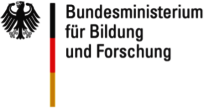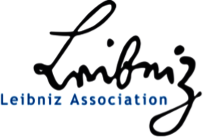

One of the fundamental principles of quantum communication is share the quantum state between nodes of a network. Due to the fact that measurements of quantum state are inherently lossy because of the quantum mechanical principle of the Heisenberg uncertainty and the resulting no-cloning theorem, quantum states cannot be amplified. This fact, which is the core of quantum communication principle, makes the realization long-distance quantum communications a very challenging prospect as the data transmission is limited by the exponential scaling of the loss over distance. In order to obtain better scaling of the transmission rates it is therefore essential to integrate quantum repeaters and quantum memories at regular intervals of the quantum communication transmission lines. These quantum devices are therefore essential building blocks of any future long-range quantum communication systems. The QR.X project consortium attempts to tackle these challenges and realize these devices using a variety of different physical systems. In the IFW subproject we intend to build a quantum repeater segment using highly-efficient GaAs entangled photon pair sources, combining them with diamond-based quantum memory systems and quantum frequency conversion systems for long-range transport. This work is a collaborative effort, among others, with: the Humboldt University zu Berlin, the University of Stuttgart and the University des Saarlandes.
One important step towards fully integrated global scale quantum communication networks are encapsulated local area (‘campus’) networks which operate at moderate distances and number of devices. This approach, which is at the core of the QD-CamNetz project, avoids the issues of long-distance quantum communication, i.e. the need for quantum repeaters, and limits the complexity and therefore allows for practical hardware and software integration and development of quantum information exchange into existing and future classical communication systems such as 5G and 6G. These thereby obtained hybrid quantum-classical systems intend to leverage an advantage from using quantum information exchange as one of the network services of classical communication systems and therefore aim at generating a quantum-advantage beyond secure quantum key distribution (QKD). The targeted quantum-advantages beyond QKD are therefore, quantum synchronization for ultra-low latency, shared randomness, as well as quantum random linear network coding. Another advantage of targeting these unexplored quantum-classical application scenarios is that they are potentially able provide a quantum-advantage without very high data throughput, which is a principle challenge of all current practical quantum communication schemes.
For some time, the internet of things (IoT) becomes – step-by-step – an integral part of today’s world. Many modern ‘smart’ devices are able to communicate with directly with the internet as well with other such devices. While this is an ongoing process and no one can predict with any certainty how the full integration of these devices will reshape the human society, it is clear resource efficient decentralized communication networks are urgently needed to facilitate the widespread use of IoT networks. While classical data communication networks are highly reliable they do suffer from the limitations of classical communication schemes. Quantum communication on the other hand can theoretically offer – at least for some of these applications – more efficient solutions. In order to exploit these quantum-advantages much more applied research is required to transfer these theoretical ideas in practical systems. With this premise in mind, the goal of QUIET project is to investigate how quantum network architectures and principles can be used beneficially for decentralized networks of small devices, so-called Internet of things (IoT) networks. The SSPQ group is specifically interested in these networks for distributed quantum metrology applications. These investigations are performed as part of the QUIET project consortium in is a collaboration of research groups of the IFW and TU Dresden, the TU Munich and the Deutsche Telekom AG. One of the principle goals of and main responsibility of SSQP group in this project is to build a distributed quantum metrology network demonstrator using the GaAs quantum dot spin qubits [2] as sensitive quantum sensors with an efficient optical readout interface. The distributed quantum sensing aspect is realized by the single photon interference of the optical signals of these sensors at a central server.
Within this project we aim to establish a synthesis process of twisted nanostructures by chemical vapor deposition (CVT) with the main focus on the material class of Transition-metal dichalcogenides (TMDs). We propose to synthesize different highly crystalline TMD nanostructures beyond pair combinations directly on substrates and control the degree of twist. In order to achieve twisted 2-dimensional nanostructures nucleation points on the substrate for the screw dislocation-driven growth are required. By careful engineering of the nucleation points and subsequent CVT growth in low supersaturation mode, we aim to vary the twisting angle of the nanostructures.
Using these novel twisted nanostructures, we aim to employ both transmission electron microscopy as well as optical spectroscopy to investigate both the structural, electronic and quantum properties of these 2DM defect centers. By combining both atomic resolution microscopy as well as investigations of electronic structure we want to comprehensively investigate the physical properties and mechanisms of effects such as Moiré excitons and Mott insulators in these structures and assert their suitability for new fundamental and applied research opportunities.
At the end of the project we will answer the following scientific questions: Is it possible to grow twisted TMD nanostructures using CVT? How is it possible to control the twisting angle by engineering the substrate structure and controlling the growth regime? How is it possible to control the combinatorics of the twisted layers (e.g., fabricating structures beyond twisted bilayers)? What is the nature of the generated exotic electronic phases? Do these nanostructures exhibit optically active spin states?



